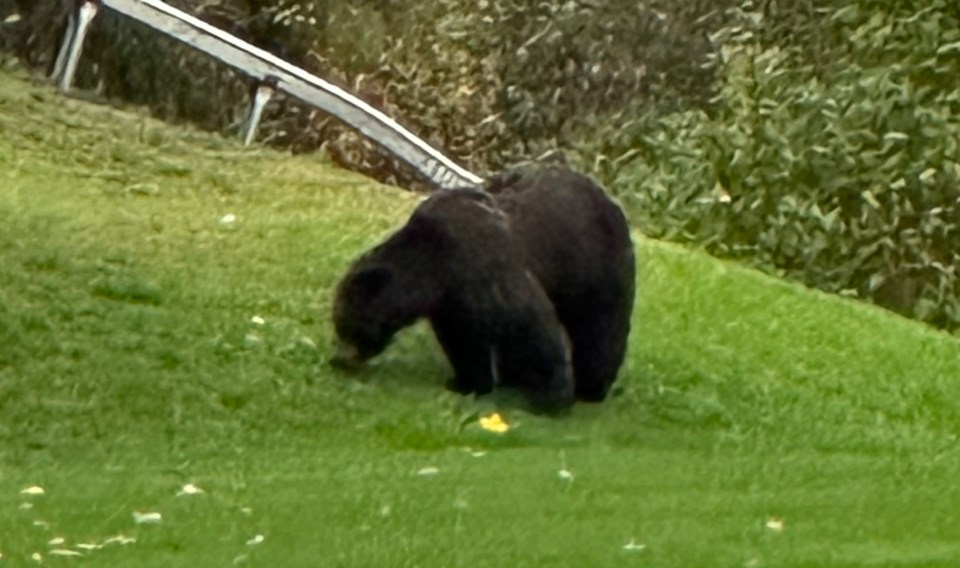For the past week there’s been a rather large grizzly bear munching on the grass in the soccer field in Tapley’s Farm, right beside Myrtle Philip school, right beside our house. It’s been in our own yard, and all around our neighbourhood and our kids. We are used to bears here. There are always many black bears in this same field. We walk our kids to school right past them in the fall. Yet to some of us, grizzlies feel different. Though very rare, twice as many human deaths are caused by grizzlies than black bears.
The school has responded by keeping the kids close by at recess, with extra adult supervision. The BC Conservation Officer Service has responded by attending, but they are loathe to do anything unless the bear becomes aggressive.
This is quite a different approach from that in June, when they immediately “relocated” a grizzly from the golf course. I suppose golfers are better for our economy than our kids, so this is logical from a capitalist perspective. However, it made some people upset, since bear relocation can be dangerous (for both people and the bear), or simply ineffective (they sometimes wander back). Sometimes it feels like our bears have more housing rights than our seasonal workers and renters.
I like that we live among bears. I’ve had many encounters with grizzlies up north and in the Chilcotins. I’m not afraid of them. I don’t think they’ll eat my children. This is their home, too. I’ve chosen to live in bear country. I’m highly risk-tolerant, in general. I’m not a paranoid parent, but I do like my kids. I simply don’t see any value in letting grizzlies habituate beside a school. However low the risk may be, it isn’t zero. On the flip side of the risk/benefit equation, the potential benefit of leaving it alone beside a school is zero. When a risky situation has no potential benefit, it becomes valueless. This is the critical difference between this situation, and taking my kids into the bike park, for example. The bike park is far riskier, but it carries enough benefit (fun and excitement) to give it value.
I’d like to see at least an attempt to keep grizzlies away from our schools. It’s feeding on a giant, manicured, fertilized lawn, maintained by the Resort Municipality of Whistler. This is arguably not a natural food source. It’s not sedge grass in a remote estuary. The field has not always been there, and the sheer amount of perfect grass only exists because of the artificial watering and fertilizing. The field has great community value, but it is a bear attractant, no different than garbage or fruit trees. I’ve asked the muni to consider cutting it very short, a logical idea that might make it less appealing. I did this to my grass. The COS thought this was a good idea, too. It certainly can’t hurt.
Between a scalped lawn and making some noise, perhaps the bear will move on. Anywhere else is fine with me, just not beside an elementary school (ours or anywhere else). This is the approach in grizzly-endemic communities in the Rockies, for example. It feels very reasonable, and there’s no harm in trying.
If you agree, please let the COS and mayor know. School officials shouldn’t have to deal with this like they are—keeping our kids safe from predation isn’t their job. It’s not fair to the kids, either—it creates an unhelpful fear of bears in some of them. No doubt we’ll be dealing with this again next fall, as this is the third year in a row.




